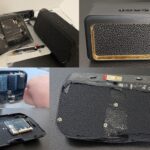Introduction to Metro North M7A EMU Battery Retrofit
Metro North’s M7A electric multiple unit (EMU) trains serve millions in New York’s commuter network. However, the push for greener transit has sparked interest in the Metro North M7A EMU battery retrofit. This initiative aims to enhance sustainability, reduce emissions, and improve service on non-electrified routes. Consequently, let’s explore this innovative project and its transformative potential.
What Is the Metro North M7A EMU?
The M7A EMU, built by Bombardier, powers Metro-North’s Harlem, Hudson, and New Haven lines. Specifically, these trains rely on a 650V DC third rail for electricity. Moreover, their modern design ensures reliability and passenger comfort. However, non-electrified branches limit their reach. Thus, the Metro North M7A EMU battery retrofit seeks to address this challenge.
Why Battery Retrofits for Metro North M7A EMUs?
Battery retrofits enable M7A trains to operate on non-electrified tracks. By integrating battery systems, Metro-North reduces reliance on diesel locomotives. Consequently, this lowers carbon emissions and aligns with sustainability goals. Additionally, retrofitting existing trains saves costs compared to purchasing new ones. Therefore, the Metro North M7A EMU battery retrofit offers a practical, eco-friendly solution.
Benefits of Metro North M7A EMU Battery Retrofit
Enhanced Sustainability
The Metro North M7A EMU battery retrofit significantly cuts emissions. By replacing diesel with battery power, trains produce zero tailpipe emissions. Consequently, this supports Metro-North’s commitment to environmental stewardship. Furthermore, cleaner operations improve air quality for communities along the routes. Thus, the retrofit promotes a greener future for commuter rail.
Cost-Effective Modernization
Retrofitting M7A EMUs with batteries avoids the expense of new trains. Specifically, it leverages existing infrastructure, reducing capital costs. Moreover, batteries recharge using regenerative braking, lowering energy expenses. Therefore, the Metro North M7A EMU battery retrofit balances modernization with fiscal responsibility. As a result, Metro-North optimizes resources while enhancing service.
Expanded Service Reach
Non-electrified branches, like parts of the Danbury line, limit M7A operations. However, battery retrofits allow these trains to travel beyond third-rail zones. Consequently, passengers enjoy seamless, one-seat rides. Additionally, this reduces transfer times and improves convenience. Thus, the Metro North M7A EMU battery retrofit enhances regional connectivity.
Improved Passenger Experience
Battery-powered M7A EMUs offer quieter, smoother rides than diesel trains. Moreover, they maintain the M7A’s modern amenities, like spacious seating and accessibility features. Consequently, passengers benefit from comfort and reliability. Furthermore, eco-conscious travelers appreciate the reduced environmental impact. Therefore, the retrofit elevates the overall commuting experience.
Challenges of Metro North M7A EMU Battery Retrofit
Technical Limitations
Retrofitting M7A EMUs with batteries poses engineering challenges. Specifically, fitting batteries into existing designs requires careful space management. Moreover, ensuring sufficient range for long routes is critical. Consequently, Metro-North must balance battery size with train performance. Thus, the Metro North M7A EMU battery retrofit demands innovative solutions.
High Initial Costs
Although retrofitting saves money long-term, initial costs are significant. Specifically, purchasing and installing battery systems requires substantial investment. Additionally, testing and certification add expenses. However, these costs may offset through energy savings and grants. Therefore, Metro-North must strategically manage the retrofit’s financial demands.
Battery Maintenance and Lifespan
Batteries require regular maintenance and eventual replacement. Consequently, Metro-North must plan for long-term upkeep. Moreover, lithium-ion batteries, commonly used in retrofits, raise recycling concerns. However, advancements in battery technology may mitigate these issues. Thus, the Metro North M7A EMU battery retrofit needs sustainable maintenance strategies.
Infrastructure Upgrades
Battery-powered EMUs need charging stations at terminals. Consequently, Metro-North must invest in infrastructure upgrades. Additionally, ensuring compatibility with existing third-rail systems is crucial. However, these upgrades enhance operational flexibility. Therefore, the Metro North M7A EMU battery retrofit requires coordinated planning to integrate new technology seamlessly.
How the Metro North M7A EMU Battery Retrofit Works
Battery Integration Process
The Metro North M7A EMU battery retrofit involves installing lithium-ion batteries into existing train cars. Specifically, technicians modify undercarriage spaces to house battery packs. Moreover, they integrate control systems to switch between third-rail and battery power. Consequently, this ensures smooth transitions. Thus, the retrofit enhances operational versatility.
Power Management Systems
Advanced power management systems optimize battery usage. Specifically, they monitor energy levels and prioritize efficiency. Additionally, regenerative braking recharges batteries during deceleration. Consequently, this extends the train’s range. Moreover, these systems ensure reliable performance. Therefore, the Metro North M7A EMU battery retrofit maximizes energy efficiency.
Charging Infrastructure
Charging stations at key terminals, like Oyster Bay, support battery-powered EMUs. Specifically, fast-charging systems replenish batteries in minutes. Moreover, Metro-North may install chargers at strategic points along routes. Consequently, this minimizes downtime. Thus, the Metro North M7A EMU battery retrofit relies on robust charging networks.
Testing and Implementation
Before revenue service, retrofitted M7A EMUs undergo rigorous testing. Specifically, engineers evaluate battery range, safety, and performance. Moreover, they simulate real-world conditions to ensure reliability. Consequently, this minimizes disruptions for passengers. Therefore, the Metro North M7A EMU battery retrofit prioritizes safety and efficiency during rollout.
Metro-North’s Commitment to Sustainability
Metro-North aims to reduce its carbon footprint significantly. Consequently, the Metro North M7A EMU battery retrofit aligns with this goal. By transitioning to battery power, the railroad cuts diesel emissions. Moreover, it supports New York’s climate initiatives. Thus, this project positions Metro-North as a leader in sustainable rail transport.
Comparison with Other Battery Train Initiatives
Long Island Rail Road’s BEMU Project
The Long Island Rail Road (LIRR) tested a battery-electric M7 prototype. Specifically, it aimed to serve non-electrified branches like Oyster Bay. However, challenges like limited battery range halted progress. Consequently, Metro-North’s retrofit learns from these trials. Thus, the Metro North M7A EMU battery retrofit builds on prior experience.
Global Battery Train Trends
Globally, battery trains gain traction in Europe and Asia. For example, Germany’s Stadler FLIRT BEMUs operate on partially electrified routes. Moreover, Japan uses battery trains for rural lines. Consequently, Metro-North can adopt best practices from these projects. Therefore, the Metro North M7A EMU battery retrofit reflects global innovation.
Impact on Metro-North’s Operations
Operational Efficiency
Battery-powered M7A EMUs streamline operations on non-electrified routes. Specifically, they eliminate the need for diesel locomotive swaps. Consequently, this reduces maintenance costs and downtime. Moreover, faster acceleration improves schedules. Thus, the Metro North M7A EMU battery retrofit enhances overall efficiency.
Service Expansion Potential
The retrofit enables Metro-North to expand service to unelectrified branches. For instance, lines like Danbury and Waterbury could see direct service. Consequently, this reduces passenger transfers and travel times. Additionally, it boosts ridership. Therefore, the Metro North M7A EMU battery retrofit unlocks new service opportunities.
Environmental Impact
By reducing diesel use, the retrofit lowers Metro-North’s emissions. Specifically, it aligns with New York’s climate goals. Moreover, cleaner trains improve air quality in urban areas. Consequently, this benefits public health. Thus, the Metro North M7A EMU battery retrofit drives environmental progress.
Future Prospects for Battery Retrofits
Scalability Across Metro-North’s Fleet
The Metro North M7A EMU battery retrofit could expand to other train models. For example, M8 EMUs may adopt similar technology. Consequently, this creates a unified, eco-friendly fleet. Moreover, scalability reduces costs over time. Thus, Metro-North can modernize its entire network efficiently.
Technological Advancements
Battery technology continues to evolve rapidly. Specifically, improvements in energy density extend range. Moreover, recycling processes are becoming more sustainable. Consequently, future retrofits may be more cost-effective. Therefore, the Metro North M7A EMU battery retrofit sets the stage for ongoing innovation.
Policy and Funding Support
New York’s climate policies support green transit initiatives. Consequently, Metro-North may secure grants for retrofits. Additionally, federal funding for sustainable transport is increasing. Therefore, the Metro North M7A EMU battery retrofit benefits from strong policy backing. Thus, it aligns with broader environmental goals.
FAQs About Metro North M7A EMU Battery Retrofit
What is the Metro North M7A EMU battery retrofit?
The Metro North M7A EMU battery retrofit equips existing M7A trains with batteries. Consequently, they can operate on non-electrified tracks. This reduces diesel use, cuts emissions, and expands service. Moreover, it aligns with Metro-North’s sustainability goals.
Why is Metro-North retrofitting M7A EMUs with batteries?
Metro-North aims to reduce emissions and expand service. Specifically, battery retrofits allow M7A EMUs to run on unelectrified routes. Consequently, this eliminates diesel locomotives. Thus, the Metro North M7A EMU battery retrofit promotes eco-friendly, efficient transit.
How does the battery retrofit improve passenger experience?
Battery-powered M7A EMUs offer quieter, smoother rides. Moreover, they maintain modern amenities like accessibility features. Consequently, passengers enjoy comfort and reliability. Additionally, eco-conscious travelers appreciate the reduced environmental impact. Thus, the retrofit enhances commuting.
What are the challenges of the Metro North M7A EMU battery retrofit?
Challenges include high initial costs and technical limitations. Specifically, fitting batteries into existing trains is complex. Moreover, infrastructure upgrades like charging stations are needed. However, long-term savings and environmental benefits outweigh these hurdles. Thus, the retrofit is a strategic investment.
How does the retrofit align with sustainability goals?
The Metro North M7A EMU battery retrofit cuts diesel emissions. Consequently, it supports New York’s climate initiatives. Additionally, it improves air quality in urban areas. Therefore, the project positions Metro-North as a leader in sustainable rail transport.
Conclusion: A Greener Future with Metro North M7A EMU Battery Retrofit
The Metro North M7A EMU battery retrofit marks a bold step toward sustainable rail. By reducing emissions, expanding service, and enhancing efficiency, it transforms commuter travel. Moreover, it aligns with global trends in green transportation. Therefore, Metro-North leads the way in eco-friendly rail innovation. Explore Metro-North’s sustainability initiatives and support greener transit today!






